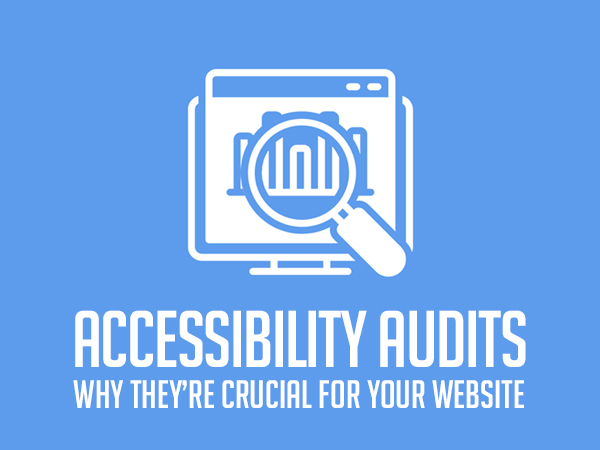An accessible website is no longer a nice-to-have feature but a must-have for any company. That’s why an accessibility audit is essential to ensure users with disabilities can access and interact with your site. Plus, an accessibility audit is critical for meeting ADA and WCAG requirements as lawsuits for non-compliance continue increasing.
In the United States alone, over 61 million people (nearly 1 in 4) have a disability, and the number continues to grow. Unfortunately, many organizations don’t understand the importance of having an accessible website or the related legal requirements. So, what’s the best first step for your company? An accessibility audit is the best way to ensure that your website meets the needs of all users, including those with disabilities.
How Does An Accessibility Audit Work?
The primary purpose of an accessibility audit is to identify website areas not accessible to all users. But it’s also crucial to help you meet WCAG 2.0/2.1 AA compliance levels and mitigate future legal penalties that can be exorbitant—and especially problematic for smaller firms with tighter budgets.
Problem areas include sections that make it difficult or impossible for users with disabilities to engage with the site. Once the audit identifies areas to fix, your dev team can make necessary changes.
Here are some common obstacles an accessibility audit may identify:
- Low contrast text: Website text should have sufficient contrast to make it easy for users with disabilities to read.
- Poorly organized content: Content should be straightforward for all users to understand and navigate.
- Unlabeled controls: Controls, such as buttons and links, should be labeled clearly so all users can understand and use them.
- Missing alternative text: Alternative text should be included for images and other non-text elements so users with visual impairments can access them.
- Inadequate color and font choices: Colors and fonts should be chosen with accessibility in mind and limited to specific combinations for maximum readability.
Improved Accessibility Enhances UX & SEO
An accessibility audit can also help you assess your website’s overall user experience. The audit can identify areas where people may be experiencing difficulty and help your team make necessary changes to improve your site’s overall UX. And that doesn’t just apply to people with disabilities. A poor UX experience can turn off any user, regardless of ability level. All the more reason to conduct an audit, which can ultimately enhance UX, encourage repeat visitation, and boost your online sales.
In addition to meeting the legal requirements and improving the website’s usability, an accessibility audit is also vital for SEO purposes. Search engines, such as Google, are increasingly using accessibility to rank websites in their search results. An accessibility audit can help ensure that the website is optimized for search engine rankings and meets the requirements of the WCAG.
Summary: Take a Proactive Approach
Overall, an accessibility audit is essential for all company websites. It helps your dev team understand legal requirements and identify ways to make your site more accessible to all users. It’s also crucial for improving UX and optimizing search engine rankings. But, most importantly, it helps support digital inclusivity for people with disabilities, a commitment any company should be willing to make.
By conducting an accessibility audit, organizations can increase website accessibility and meet ADA and WCAG requirements. In an increasingly stringent legal environment, the time to act is now.














